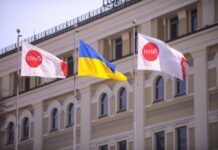Suhail al-Mazrouei, OPEC’s rotating president and energy minister of the United Arab Emirates, said this week the 14-member producers’ group is working on a plan for a formal alliance with ten other petro-states, including Russia, aimed at propping up oil prices for the foreseeable future, The Economist reported.
The proposal would materialize OPEC’s most ambitious venture in decades, but al-Mazrouei insisted the result will not be a “supergroup” and that it remains an idea in “draft” form. But whatever its chances, it attempts to shift a belief widely held by participants in oil markets: that non-American oil producers are helpless against the shale revolution.
A renewed flood of American shale production in the latter part of 2017 has strengthened that belief. The International Energy Agency (IEA), the industry’s main forecaster, says America could overtake the two biggest producers, Russia and Saudi Arabia, this year. Such countries, it added, faced the “sobering thought” that America’s rise to the super league was reminiscent of the first wave of shale growth that ended with an oil-price crash in 2014.
The shale resurgence comes at a delicate time for OPEC, Russia and the rest. It is largely their actions that have pushed up prices. In 14 months they have come close to their goal of curtailing oil production in order to return the oversupply of global crude to its more manageable five-year average. They still have about 74 million barrels to go. As yet, Mazrouei says, there is no “exit strategy” for when the agreement is reviewed in June.
Fareed Mohamedi, chief economist at Rapidan Energy Group, an American consultancy, likens their task to central bankers unwinding ultra-easy monetary policy.
“They risk spooking the markets if they send the wrong signal. So the proposal of a pact lasting into the foreseeable future is a way to reassure the market that the grown-ups will continue to regulate supply,” Mohamedi says.
A shift is underway in relations between Saudi Arabia and Russia, the two leaders of the OPEC/non-OPEC cabal. Since King Salman of Saudi Arabia visited Moscow for the first time in October, the two countries’ oil ministers have frequently popped over to each other’s capitals. Furthermore, the two countries are discussing unprecedented investments in each other’s oil industries. A Russian sovereign wealth fund is considering buying shares in the Aramco listing. Aramco is mulling a stake in a vast liquefied-natural-gas project in the Russian Arctic.
The possibility of long-term co-operation between the two countries to support oil prices also has a defensive logic. Not only is rising American oil production a threat but in the coming decades’ demand for oil is expected to wane as it is replaced by cleaner sources of energy.
This could cause a race to the bottom as big producers try to sell their oil before it becomes worthless. Restraining production is a way to postpone such feral competition, at least until Russia and Saudi Arabia can wean their economies off oil.












